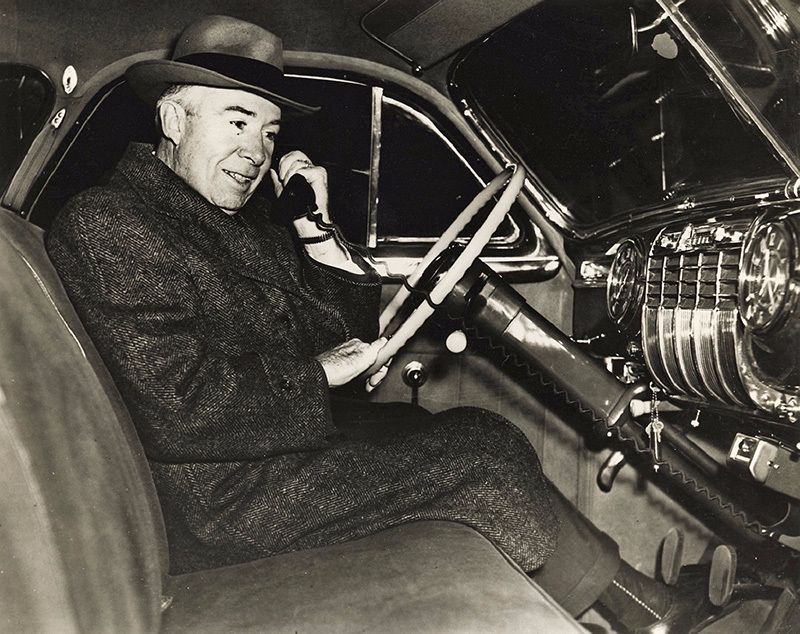 The car and telephone, two pioneering inventions separated by only a decade (1885 and 1875, respectively), have transitioned from being merely technological curiosities to becoming indispensable elements of contemporary life.
The car and telephone, two pioneering inventions separated by only a decade (1885 and 1875, respectively), have transitioned from being merely technological curiosities to becoming indispensable elements of contemporary life.
One would think that combining these two revolutionary innovations would be a natural step, but the truth is far more intriguing than that.
Similar to many first-generation technologies, the first “car phone” was both bulky and cumbersome, hardly practical for everyday use.
The history of car phones dates back to the early 1940s when Bell Labs developed the first mobile telephone service. This service originated was first used in St. Louis, Missouri, United States on June 17, 1946.
The original equipment weighed 80 pounds (36 kg), and there were initially only 3 channels for all the users in the metropolitan area.
Later, more licenses were added, bringing the total to 32 channels across 3 bands. This service was used at least into the 1980s in large portions of North America.
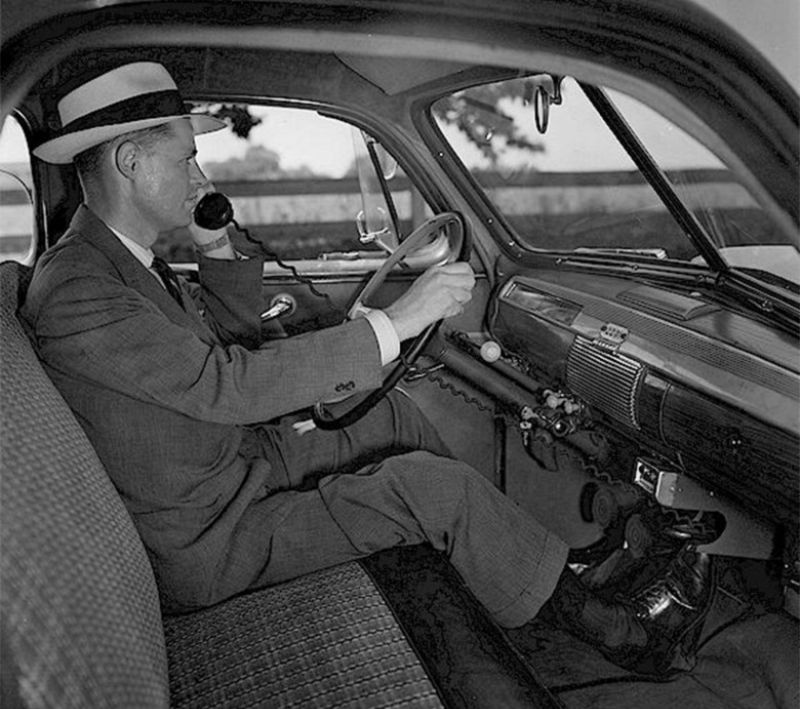
The earliest version of a mobile phone was first created in 1946, it was called a “mobile radiophone service.”
On October 2, 1946, Motorola communications equipment carried the first calls on Illinois Bell Telephone Company’s new car radiotelephone service in Chicago. Due to the small number of radio frequencies available, the service quickly reached capacity.
In West Germany, the car phone service was first released in 1958 as the A-Netz service. In 1971, it reached its capacity limit of almost 11,000 subscribers and was succeeded by B-Netz in 1972, which featured direct dialling, not requiring a human operator to connect calls.
However, in order to reach a subscriber, one would still need to know their location since the handset would assume the local area code of the base station serving it. It was succeeded in 1985 by the C-Netz 1G system.
The original car phones were bulky and expensive, often costing more than the car itself. They were also limited to a few hours of talk time, and the signal quality was poor, with frequent dropped calls.
In the early 1980s, car phones were mostly used by business executives, politicians, and wealthy individuals who needed to stay connected while on the move.
 During the in 1980s, the car phone was more popular than the mobile phone. However, as mobile phones became lighter and more affordable during the mobile phone boom in the 1990s, car phones became less common.
During the in 1980s, the car phone was more popular than the mobile phone. However, as mobile phones became lighter and more affordable during the mobile phone boom in the 1990s, car phones became less common.
By the 2000s, car phones had become uncommon due to the convenience of mobile phones along with in-car mobile phone integrative technologies such as Bluetooth.
There were still some car phones available as recently as 2008, including the Nokia 810 and the Motorola VC6096 for use with GSM networks and a car phone made by NAL Research for the Iridium satellite network.
Motorola provided US customers with the m800 and m900 car phones, for use with CDMA and GSM networks respectively.
Some car phones had color screens and supported high-speed data connections as well as the ability to access SIM cards stored in other phones via Bluetooth.
Since 2008, many automobiles have featured integrated, “hands-free” systems to utilize a consumer’s cellular phone, via a Bluetooth wireless link or use an integrated transceiver.
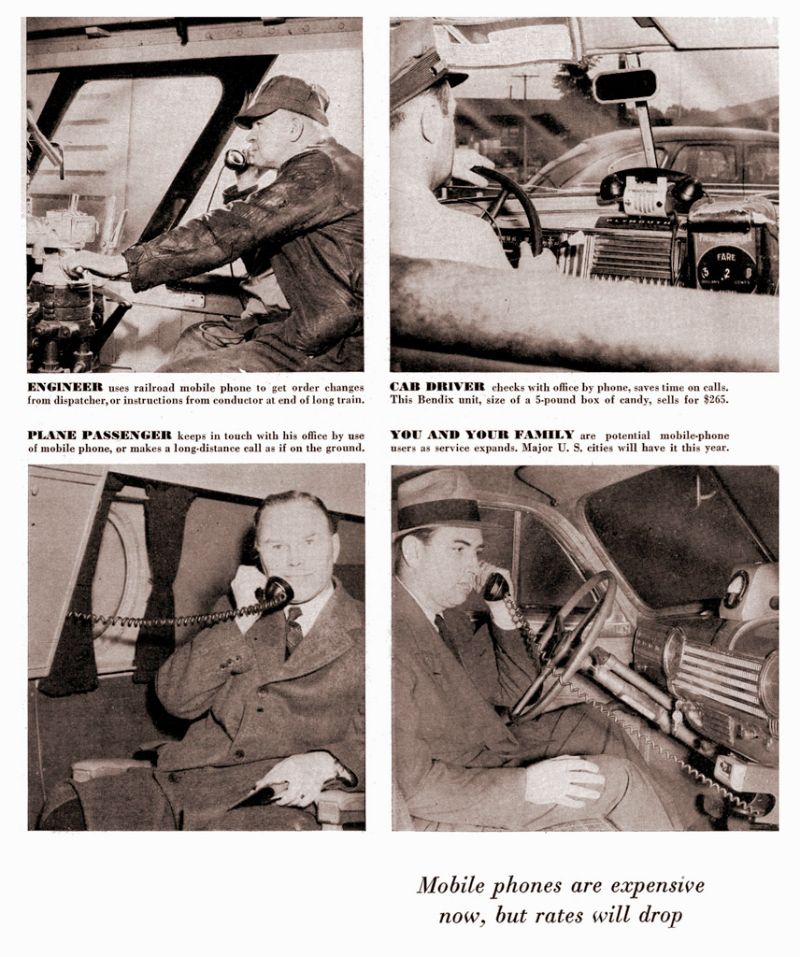
America Talks, c. 1947.

Woman uncomfortably surrounded by spectators, c. 1948.







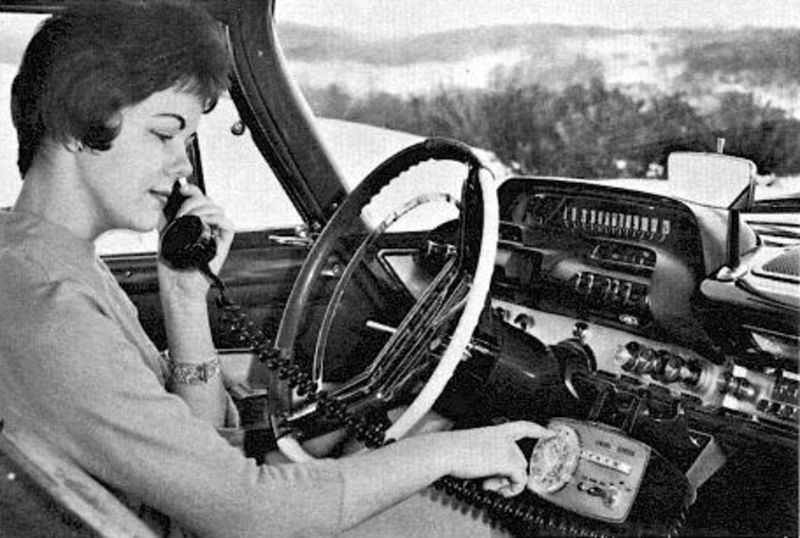
DeSoto with an early car phone, c. 1950s.
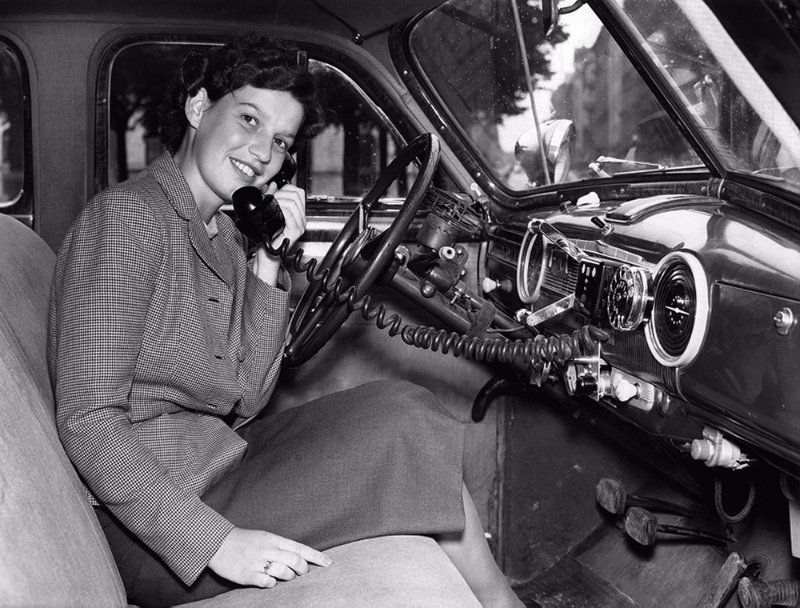
In-car telephone, c. 1950.

Man with cigar and car phone, c. 1953.

Gentleman calls home, c. 1956.
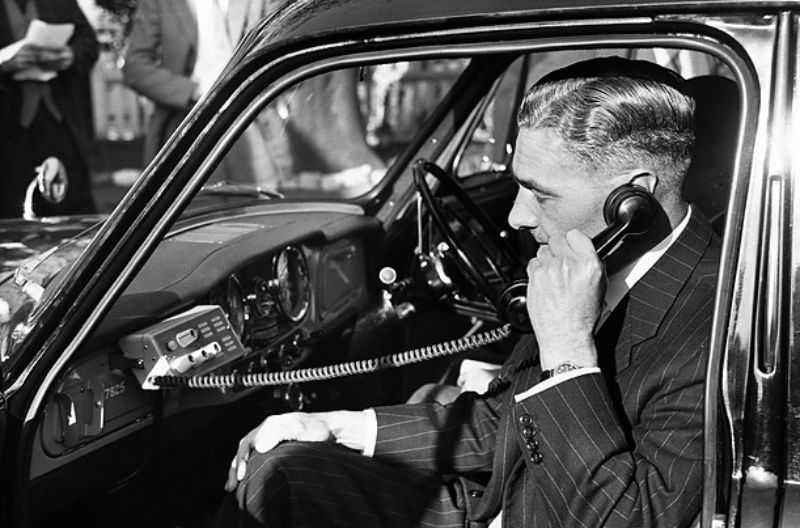
Reginald Blevins, the Postmaster General of the UK, inaugurates the first radio telephone service for motorists, 1959.

Early 1960s Mercedes with a car phone.

Portrait of an old lady and car telephone, c. 1960.

Farrah Fawcett in a customized Corvette, c. 1970.

Investment banker Michael Yancey on a cell phone in his Porsche in 1987.

Geisha with car phone, c. 1988.
